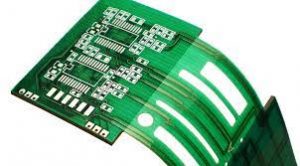Benefits of Flex PCBs
If you’re in the process of designing a cutting-edge new device or product, you may be considering using rigid flex PCBs as the main interconnects for your project. These specialized circuit boards are a great alternative to traditional rigid or multilayer PCBs and can offer a range of unique benefits that make them an excellent choice for your latest innovation.
Rigid flex PCBs combine the best aspects of rigid and flexible printed circuit boards. They allow you to design a 3-D structure, eliminating the need for bulky connectors and cables while also providing the stability of rigid sections. These structures can fit into tight spaces or curved surfaces while still maintaining their electrical performance. This flexibility is a major benefit of utilizing flex PCBs, and it can significantly increase the usability of your electronic devices and products.

In addition, rigid flex pcb manufacturer can help you reduce the overall weight of your devices and products. This is because they can be formed to a specific size and shape, making it possible for you to pack more components into the same volume of space. This can greatly improve the functionality of your products and devices, while also reducing the amount of material required to manufacture them.
The Benefits of Flex PCBs
When choosing a supplier for your flex PCBs, it’s important to find a manufacturer that has a strong reputation and quality control processes in place. You should ask your potential flex PCB manufacturers for references from previous clients and contact them to learn more about their experience working with the company. Look for comments about the manufacturer’s adherence to delivery schedules, the quality of their products, and customer satisfaction.
Flex circuits are a type of printed circuit board that includes a flexible substrate with a copper core and conductive copper traces on each side. The substrate is typically made of a polyimide or epoxy material that provides structural support and electrical conductivity. The copper layers are printed on the substrate using photochemical etching. Then, holes are drilled and plated for conductivity, and the layers are laminated together using special adhesives. Finally, the flex circuit is silkscreened with the necessary component connections, test points, and other critical information.
The etching and plating processes are similar to those used for rigid PCBs, but the fabrication of a flex circuit requires extra considerations due to its flexible nature. For example, etching of the copper layers needs to be done with care to ensure that the circuit patterns are clearly defined. Additionally, the layers must be carefully aligned during the lamination process to avoid stress and bending during assembly.
In addition, the flex circuit must be tested for quality and reliability. The flex circuit will be damaged if the connections are not properly aligned or if the circuit is subjected to excessive bending. This is why it’s important to choose a quality flex circuit manufacturing partner that uses IPC standards and practices when designing a flex PCB. This will ensure the flex circuit is reliable and will work as intended when it is assembled into a finished product.
